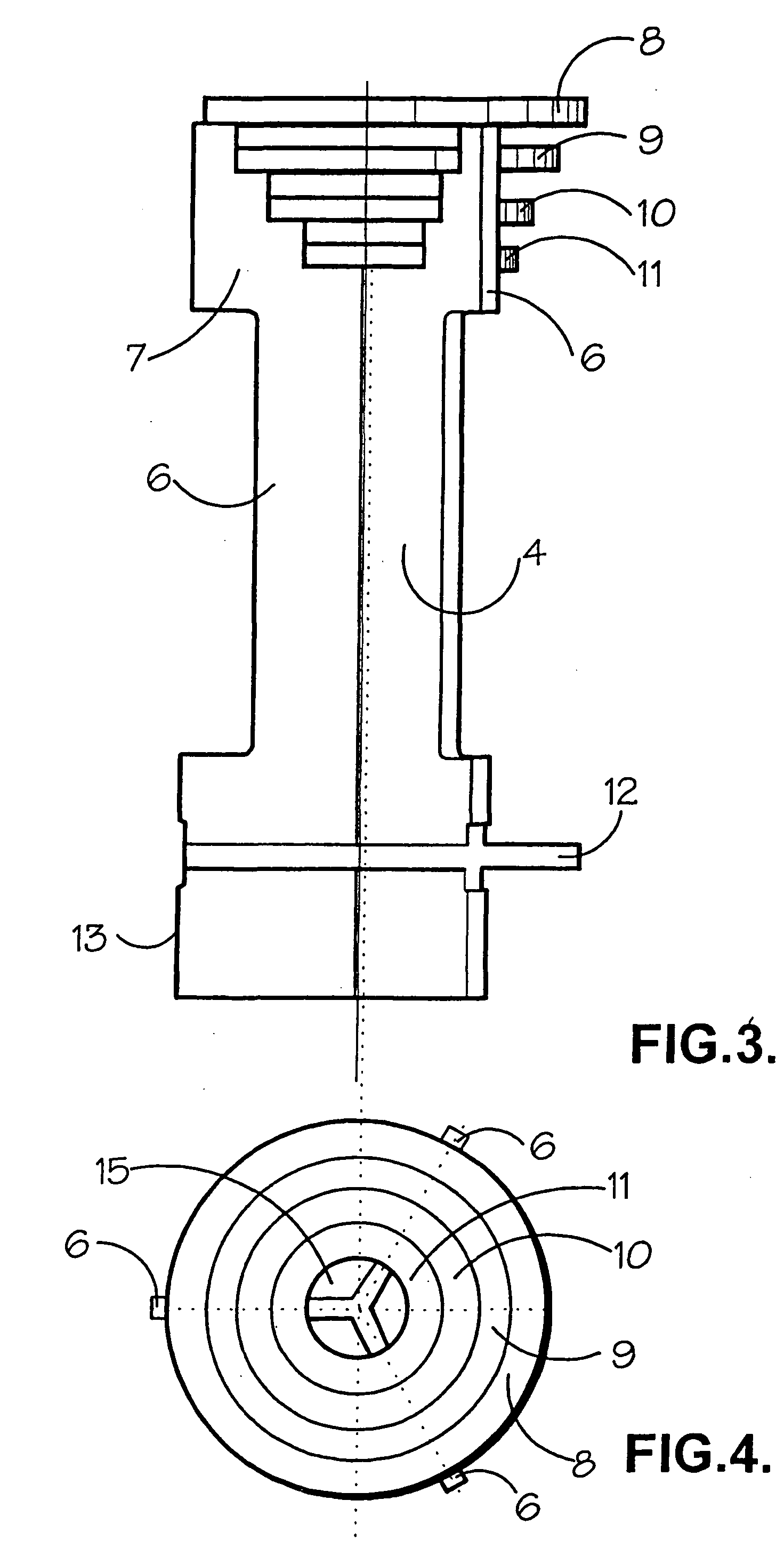Process and apparatus for loading a particulate solid into a vertical tube
a technology of elastic fluid and particulate solid, which is applied in the direction of liquid-gas reaction process, chemical/physical/physical-chemical stationary reactor, chemical/physical process, etc., can solve the problems of high operating temperature and/or high pressure, reactors may have to withstand high thermal and pressure stresses, and are subjected to crushing force, etc., to reduce the imposition of crushing force, facilitate the removal of fragments, and minimise the effect of pressure drop across the catalyst bed
- Summary
- Abstract
- Description
- Claims
- Application Information
AI Technical Summary
Benefits of technology
Problems solved by technology
Method used
Image
Examples
example 1
[0108] A glass tube 1, which was 2 metres long with an internal diameter of 38.1 mm, was set up vertically with a follower 4 of the type illustrated in FIGS. 1 to 4 initially positioned at its bottom end. This follower 4 had a disc 12 of diameter 36 mm. A charge of 1.84 kg of a nickel catalyst (nickel on calcia-alumina support catalyst balls of nominal diameter 6 mm) was dropped carefully into the tube. After loading, the upper perforate retainer 3 was fitted at a desired height in the tube 1. This retainer consisted of a Johnson wedge-wire screen comprising 1.5 mm wire with a 2 mm gap. The tube 1 was not filled fully to allow for the lower bulk density of the catalyst during the tests. Compressed air was introduced via a pressure regulator and flow rotameter (not shown) to the bottom of the tube 1 at a rate at least sufficient to lift the catalyst and the catalyst follower 4 such that a consolidated cushion of catalyst balls 5 was formed at the top of the tube 1 immediately under t...
example 2
[0109] The weight of catalyst used in Example 1 was checked after 10, 20, 120 and 360 tests and showed 0.38% weight loss over 360 tests. In separate tests in the same apparatus the flow resistance of the fresh and worn catalyst particles used in Example 1 was compared. At an air flow rate of 49.14 Nm.sup.3 / h the fresh catalyst particles exhibited a pressure drop of 1.21.times.10.sup.5 Pa / m, while at an air flow rate of 48.96 Nm.sup.3 / h the worn catalyst particles, after 360 tests, exhibited a flow resistance of 1.22.times.10.sup.5 Pa / m.
example 3
[0110] The procedure of Example 1 was followed using 2.06 kg of nickel on .alpha.-alumina support catalyst balls of nominal diameter 6 mm from Dycat, Type 54 / 98. This catalyst support material is much more friable than that used in Examples 1 and 2 with only about 25% of the crush strength of the catalyst used in Examples 1 and 2. The weight of the catalyst was checked after 10, 60, 150, 300 and 390 tests and showed a total weight loss of 7.0% over 390 tests. During the tests catalyst fragments represented by this weight loss were visibly removed from the bed by the gas flow as dust. The amount lost in each group of tests decreased as follows, expressed as average weight % lost per lift and drop cycle: 0.085, 0.042, 0.026, 0.010, 0.009.
PUM
| Property | Measurement | Unit |
|---|---|---|
| internal diameter | aaaaa | aaaaa |
| internal diameter | aaaaa | aaaaa |
| internal diameter | aaaaa | aaaaa |
Abstract
Description
Claims
Application Information
 Login to View More
Login to View More - R&D
- Intellectual Property
- Life Sciences
- Materials
- Tech Scout
- Unparalleled Data Quality
- Higher Quality Content
- 60% Fewer Hallucinations
Browse by: Latest US Patents, China's latest patents, Technical Efficacy Thesaurus, Application Domain, Technology Topic, Popular Technical Reports.
© 2025 PatSnap. All rights reserved.Legal|Privacy policy|Modern Slavery Act Transparency Statement|Sitemap|About US| Contact US: help@patsnap.com



